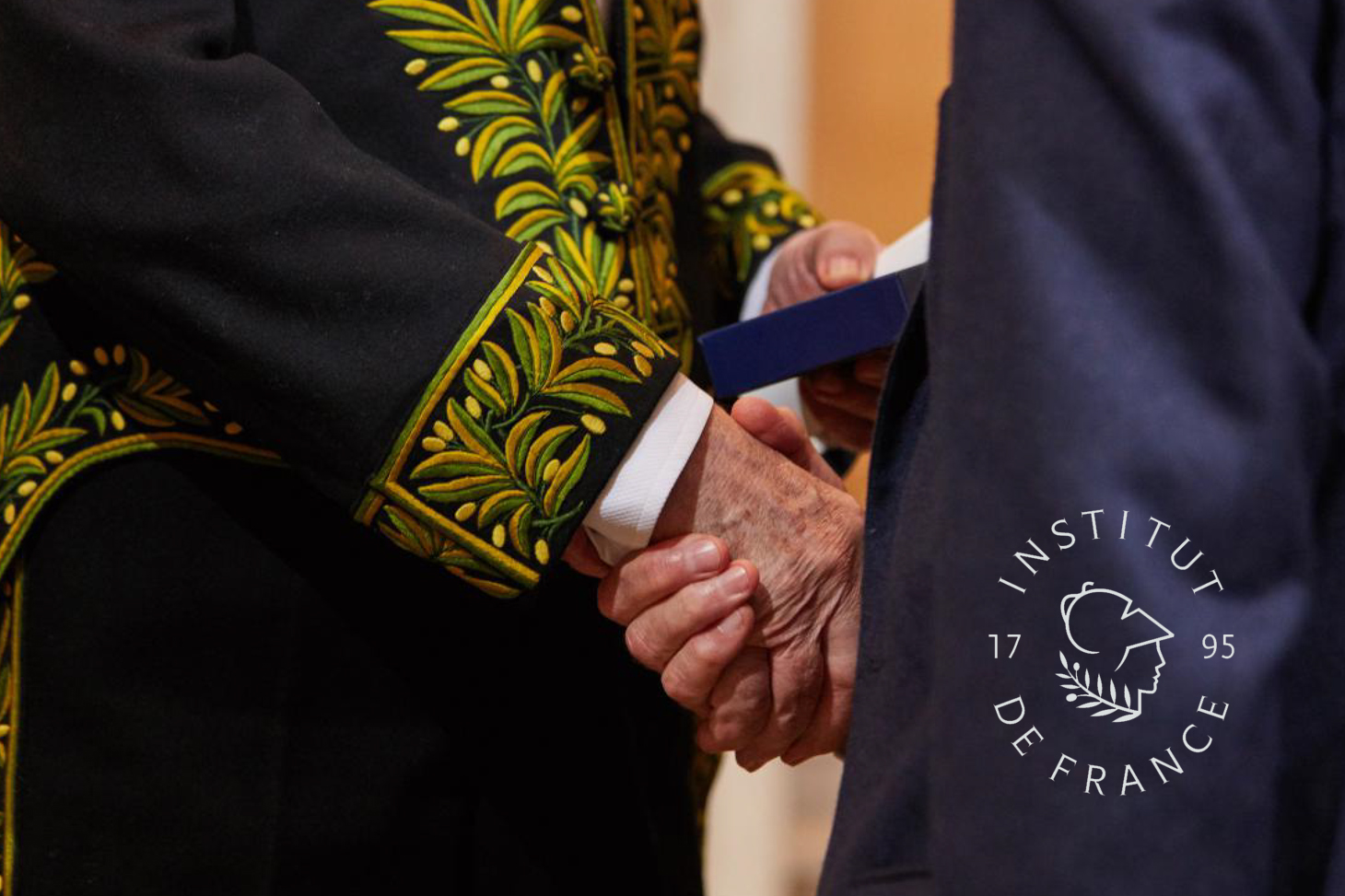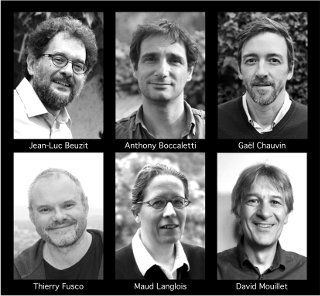The 2020 Grands Prix of the Foundations of the Institut de France
Accolade/Award
Research
On May 25, 2020

The Grand Prix Scientifique of the Charles Defforey Foundation, on the theme "Exoplanets", was awarded to Jean-Luc Beuzit [1], Anthony Boccaletti [2], Gael Chauvin [3], Thierry Fusco [4] , Maud Langlois [5] and David Mouillet [6], for the
project "Imagining New Worlds: preparing the next generation of exoplanet imagers".

The Grand Prix award winners, researchers at the CNRS, the ONERA, the Paris Observatory - PSL and in universities, were at the heart of the SPHERE project, an instrument installed at the Very Large Telescope (ESO - Chile) dedicated to imaging young giant exoplanets.
Between 2002 and 2015, using new technologies such as extreme adaptive optics and coronagraphs, the team steered the design, production and application of the instrument. SPHERE has already provided a large number of important results, such as the identification of new giant exoplanets and the study of their atmospheres, and the detailed study of the circumstellar discs in which planets form. Today, a next step is planned, with a significant development towards the SPHERE+ project, which aims to increase the contrast near the stars observed. SPHERE+ will use more high-performance technologies to reach the area in which most giant exoplanets are located in order to observe more low-mass stars.
SPHERE+ is an intermediate step that will act as preparation for an even more ambitious program for the ESO's Extremely Large Telescope (ELT) in which the winning team is involved. This work also has an instrumental and astrophysical impact on upcoming space missions such as the JWST and the Nancy Grace Roman Space Telescope (formally the WFIRST) and, in the longer term, on the launch of the space projects of the coming decades, aiming to enable the imaging and characterization of telluric exoplanets potentially similar to Earth.
In this unique adventure combining major scientific and technological challenges, the teams at the IPAG, a mixed CNRS/UGA unit at the Grenoble Universe Sciences Observatory (OSUG), played a central role in the SPHERE project, from the initial ambitious scientific motivation, to the analyses and choice of complex systems, and the integration and approval of all of the instrumentation, and coordination of the consortium of 12 European institutes. Since the launch of SPHERE in 2015, IPAG researchers have been using this instrument to search for new exoplanets, to study their atmosphere and the circumstances of their formation, as well as circumstellar discs. They promote all of the data produced by SPHERE for the entire community at the Observatory's data center.
David Mouillet is a UGA astronomer at the IPAG. From the first pioneering trials of the combined use of coronagraphs and adaptive optics, he has been studying how to push the boundaries of high-contrast imaging in astronomy, offering the SPHERE instrument and the results now achievable with SPHERE+. Gael Chauvin, a CNRS researcher currently working with the Franco-Chilean International Mixed Unit, is also affiliated with the IPAG. He coordinates the astrophysical exploitation of the SPHERE consortium and drives the astronomical interest in SPHERE+. Jean-Luc Beuzit led the SPHERE project at the IPAG; he is now director of the Marseilles Astrophysics Laboratory.
The entire team is extremely grateful to the Institut de France, the Charles Defforey Foundation and the French Académie des Sciences for the award of this prestigious prize, which will enable significant progress in its projects in the context of exoplanet imaging.

This article was originally published by the Institut de France.
Notes :
Notes :
- Aix-Marseille University, CNRS, CNES, LAM (Marseille)
- Paris Observatory, PSL University, CNRS, LESIA (Meudon)
- The Franco-Chilean Laboratory for Astronomy, International Mixed CNRS/INSU Unit and the University of Chili I Université Grenoble Alpes, CNRS, IPAG (Grenoble)
- ONERA, Department of Optics and Associated Techniques (DOTA) / Aix-Marseille University, CNRS, CNES, LAM (Marseille)
- CNRS, CRAL, Lyon 1 University, ENS Lyon, Observatoire de Lyon
- Université Grenoble Alpes, CNRS, IPAG (Grenoble)
Published on October 7, 2020
Updated on October 7, 2020
Updated on October 7, 2020

